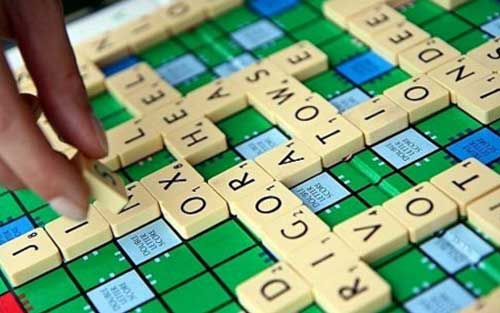动词是表示动作或状态的词,按其词义和在句子中的作用可分为行为动词,连系动词,助动词和情态动词。下面小编告诉你英语动词的种类和用法,大家一起来看看吧!
英语动词的种类和用法:
1.行为动词
行为动词可分为及物动词 (vt)和不及物动词(vi),及物动词表示动作或状态,有完整的词义,能单独作谓语,后跟宾语;不及物动词表示动作或状态,有完整的词义,能单独作谓语,但后面不能直接跟宾语,如要带宾语则与介词或副词构成短语。
如:
More and more people study English.(vt)
The students are listening to the teacher carefully.(vi)

2.连系动词
连系动词本身有一定的词义,但不能独立作谓语,必须与表语一起构成谓语。常用的连系动词有 be, get, turn, become, look, feel, grow, seem, sound, taste, smell等。
如:
Our country is becoming stronger and stronger.
It feels damp.
3.助动词
助动词本身无词义,不能单独作谓语,只能和主要动词一起构成谓语动词,表示否定,疑问及动词的时态、语态、人称和数等语法特征,助动词有 be,do,have,shall,will等。
如:
How do you usually come to school?
The children are playing yo-yo now.
4.情态动词
情态动词本身有一定的意义,但不能独立作谓语,只能和主要动词原形一起构成谓语,表示说话人的语气和情态。情态动词没有人称和数的变化。情态动词有 can (could),may(might),must, need, ought to, dare等。
如:
Can I help you?
- Must we go now? –No, you needn't .
a. can与be able to的用法有所区别。can只用于一般现在时和过去时,指本身有能力的“能”;be able to用于各种时态均可,指须经过努力而“能”。
b. must与have/has to的用法。must表示说话人主观认为“必须”,只用于一般现在时和一般将来时;have/has to表示客观需要,意为“不得不”,它可用于各种时态。
c.need和dare既可作情态动词也可作行为动词。
动词happen的语法特点及句型搭配:
1. 表示“发生”,是不及物动词,因此既不能带宾语,也不能用于被动语态。如:
事故是怎样发生的?
误:How was the accident happened?
正:How did the accident happen?

2. 表示某事发生某人身上,其后接介词 to。如:
Nobody will ever know what happened to her. 谁都不会知道她出了什么事。
She hoped nothing bad would happen to him. 她希望不会有坏事发生在他头上。
3. 表示“碰巧”,也是不及物动词,比较以下同义句型:
我昨天偶然在公园里看到她。
I happened to see her in the park yesterday.
=It (so) happened that I saw her in the park yesterday.
4. 后接介词 on / upon,表示“巧遇”“偶然发现”。如:
I happened upon her in the street the other day. 几天前我在街上碰巧遇见了她。
He happened on the book in the bookstore. 他在书店偶然发现了这本书。
5. 用于as it happens,意为“偶然”“碰巧”。如:
As it happens, I have left the book at home. 我碰巧把书忘在家里了。
We met her only yesterday, as it happens. 我们只是在昨天才与她偶然相遇。
动词treat的几条用法说明:
1. 用作动词,表示“对待”、“看作”,注意以下搭配:
They treated us with kindness. 他们对我们很好。
They treat me with respect. 他们尊重我。
Don’t treat me as [like] a child. /Don’t treat me as ifI were a child. 别把我当小孩对待。
2. 表示“治疗”,通常只表示治疗的过程,并不强调治疗的结果(即不表明治好与否)。如:
Which doctor is treating her? 哪个医生在给她治病?
He is being treated with a new drug. 他正在接受一种新药的治疗。
注:表示“治愈”的结果,要用动词 cure(参见 cure)。
3. 表示“论述”、“探讨”等,用作及物或不及物(后接介词of)动词。如:
The article treats (of) an important subject. 这本书论述一个重要问题。
注:用作不及物动词后接介词 of 的用法,主要见于较正式或较旧的文体。
4. 表示“请客(吃)”、“给人(享受)”,通常用作及物动词;要表示用什么请客或给人以什么享受,通常用介词 to。如:
He treated me to the theatre. 他请我看戏。
He treated each of the children to an ice-cream. 他请每个孩子吃冰淇淋。
注:有时可用于自己。如:
I decided to treat myself a taxi. 我决定坐一次计程车。
注:表示“请客”,还可用作名词。如:
It’s my treat. 我请客(由我付帐)。
动词remember用法的四个要点:
1. 表示记住将要做的事,其后接不定式。如:
Remember to turn out the lights before you go to bed. 临睡前别忘了关灯。
You must remember to fetch Mr Lewis from the station tomorrow. 你必须记住明天到车站去接刘易斯先生。
2. 表示记得曾经做过的事,其后接动名词(可用一般式或完成式)。如:
I remember meeting her at a party once. 我记得在一次晚会上见过她一次。
I remember reading [having read] about the earthquake in the papers. 我记得在报纸上看到过关于这次地震的消息。
偶尔也接不定式的完成式表示记得做过的事,但在现代英语中很不普通。
3. 后接不定式或动名词时,有时可带逻辑主语,此时通常可用that从句来改写。如:
我记得她曾经这样说过。
正:I remember her to have said so.
正:I remember that she said so.
我记不起你这样说过。
正:I can’t remember you [your] saying so.
正:I can’t remember that you have said so.
4. 比较以下两句分介词 to 和 as 含义不同:
Please remember me to your parents. 请代我向你父母问好。
I remember him as a naughty little boy. 在我印象中,他是个小淘气鬼。
与“英语动词的种类和用法”相关文章
赞(0)
12
12
分享:

